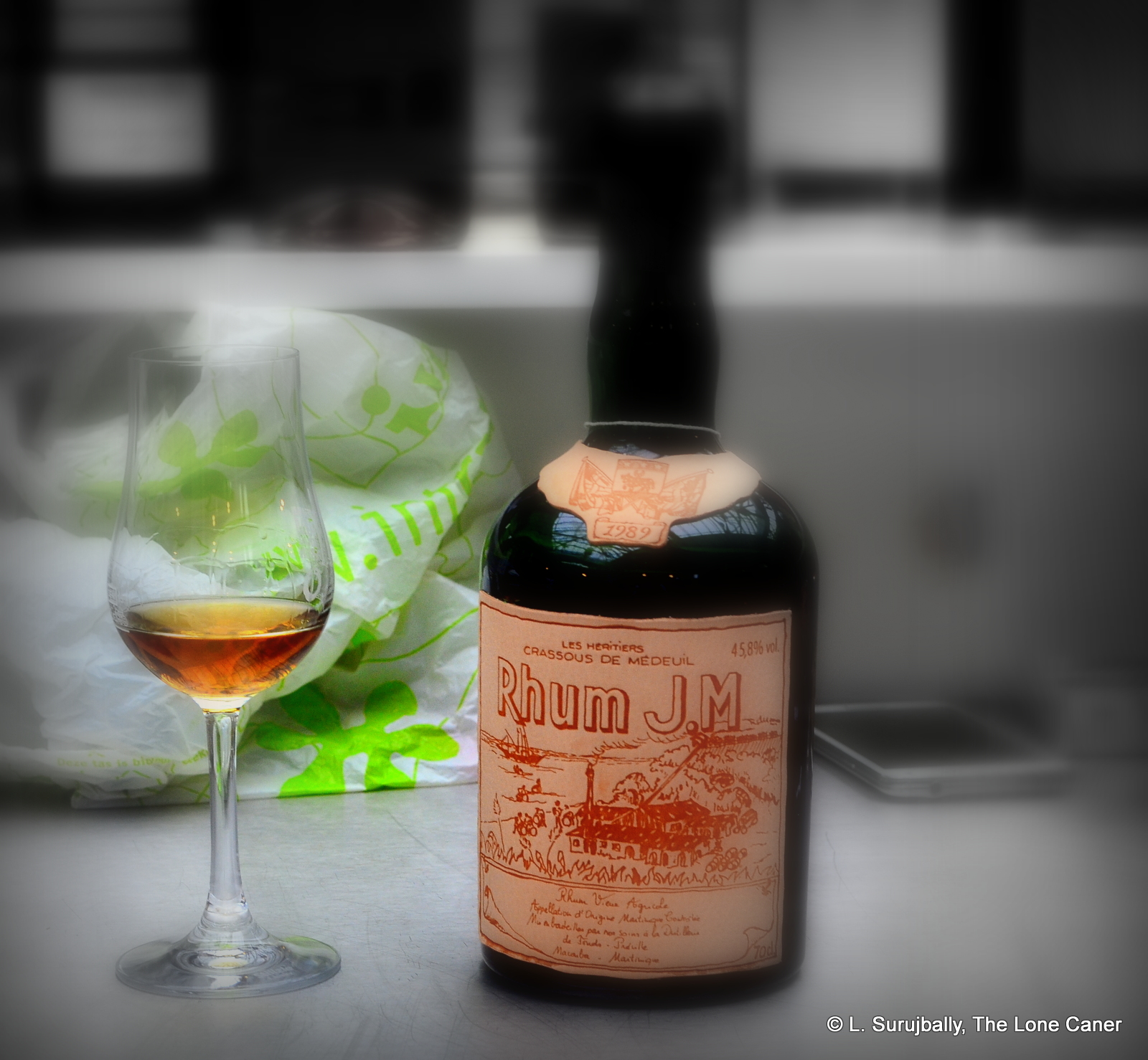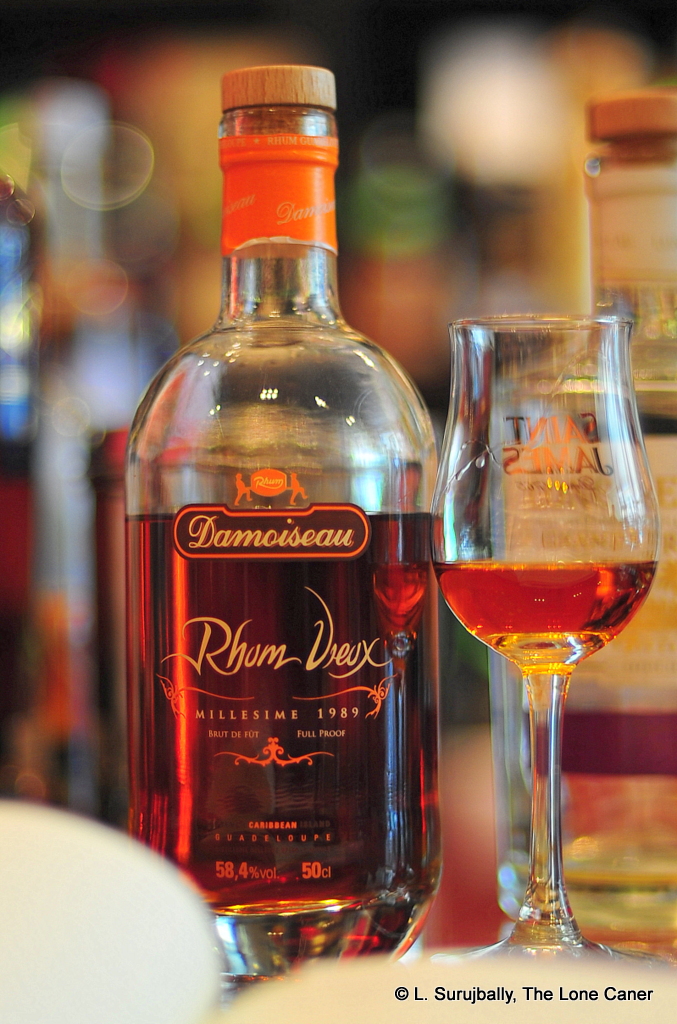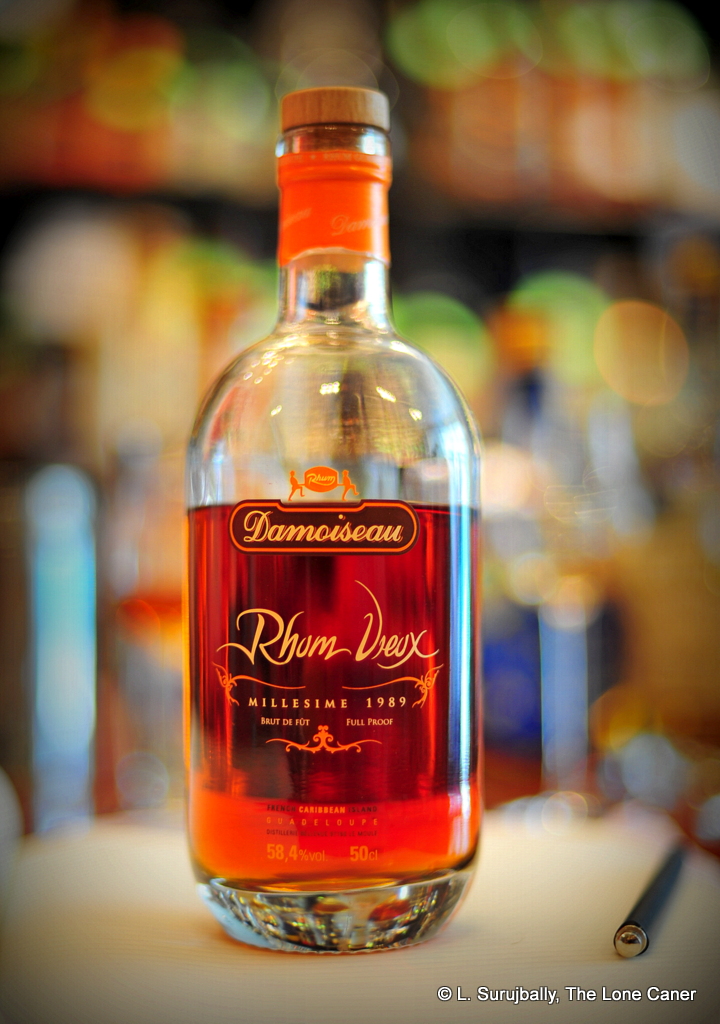
Rumaniacs Review #088 | 0587
You’d think that a rhum issued less than fifteen years ago would still be reasonably available – you’d be wrong. This amazing leather-labelled, oak-aged 15 year old agricole from J.M. (Martinique) is almost impossible to find, and if you do, it’s not cheap. It’s long since vanished from J.M.’s online shop, and I finally ended up tracking a bottle down in Switzerland, where it was a fetching a cool five hundred bucks or more, which just goes to show it’s not just other people’s money the Swiss are squirrelling away. One can only wonder how many (or how few) bottles of J.M.’s juice made up this millésime, or how good it was, for it to disappear so completely.

Colour – Gold
Strength – 45.8%
Nose – Starts off with a small bang of rubber and acetones. Then sweet peppers, floral notes; turns out it’s also chock full of strawberry bubble gum, vanilla, herbs, apple cider, unripe papaya, cherries and something deeper and darker that stays well in the background….spoiled mangoes, maybe. Really nice, but it doesn’t reveal its secrets easily. You could nose this for an hour (which I did) and still come up with some last wispy and near-unidentifiable note. Because it’s just lovely, a nice departure from heavier Jamaicans, Guyanese or Bajans.
Palate – Not quite as rich as the nose, which is a factor of the strength. Okay, I’ll cut it some lack for now, let’s see how that works out. Flowers, sweet fruits, vanilla, leather and aromatic pipe tobacco. Watermelon, grass and sugar water, also dill, rosemary and sage. The rum’s textire is smooth and warm, there’s very little sharpness here, and the balance among all these subtle flavours is damned fine.
Finish – Not too inspiring, somewhat weak and nothing really new. It’s light and breathless as if, having used up all its energy providing the nose and palate, it had little left to cough up. Flowers, light fruits, watermelon and pears, and a little vanilla.
Thoughts – Some concentration and work required here, but it’s rewarded right up to the finish. It’s all very light, that’s all – and has a snappy sort of crispness that makes every flavour stand out clearly – you could spend a whole afternoon sipping casually away and then wonder when the bottle went dry. The close is disappointing though, and leaves one wanting more – it’s too good to be indifferent to it, but too indifferent to be really good. Other than that, this is a really fine piece of work by J.M. — the way it smells and tastes, and possibly the limited outturn, goes a long way to explaining how come the thing is so rare…and so expensive.
(85/100)
Other notes
I’ve written about other J.M. rhums before this and provided some brief biographical notes of J.M.’s background in each, but if you want more details, the Wonk-in-Residence has his usual in-depth recap here, and here.


